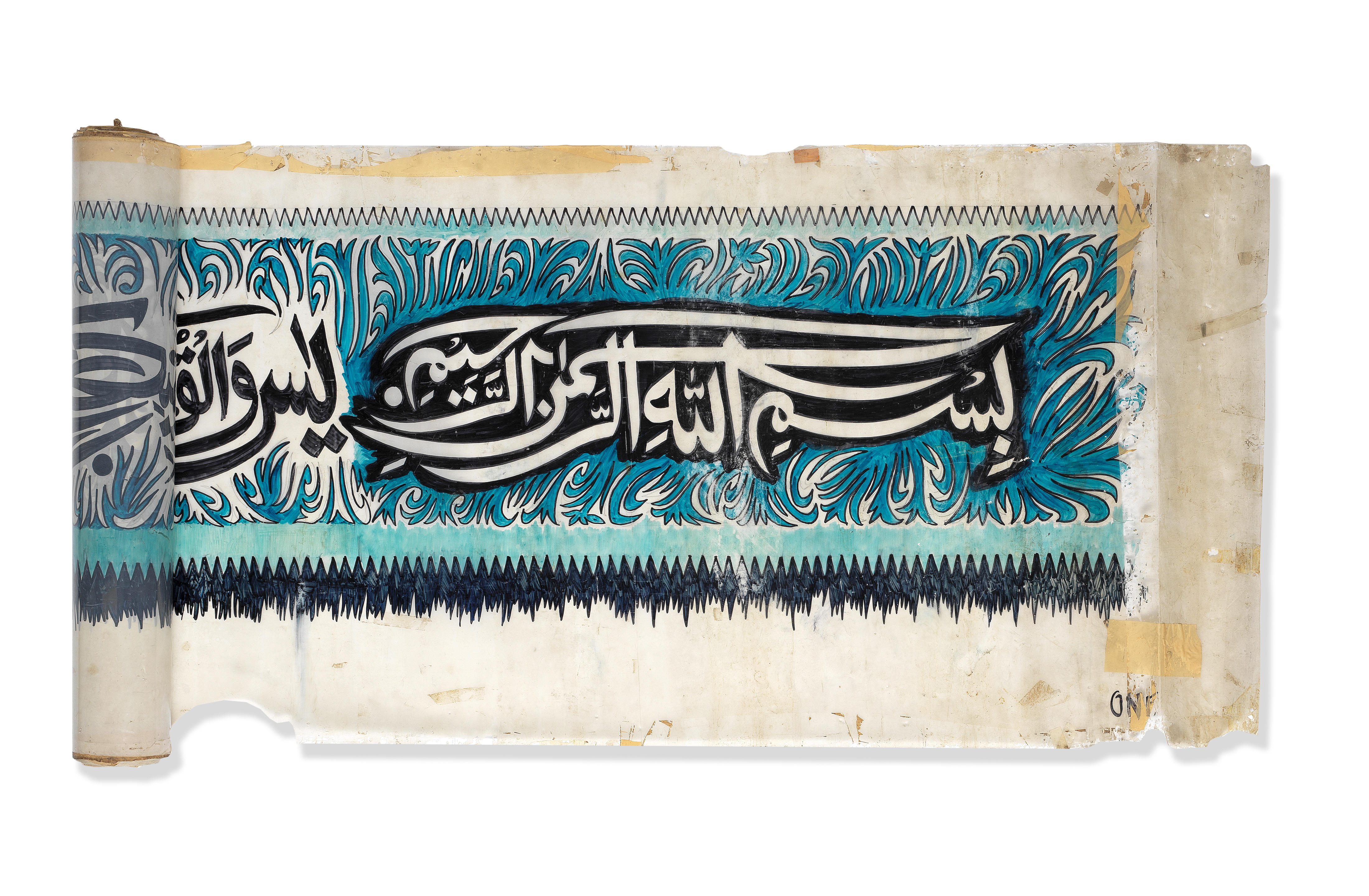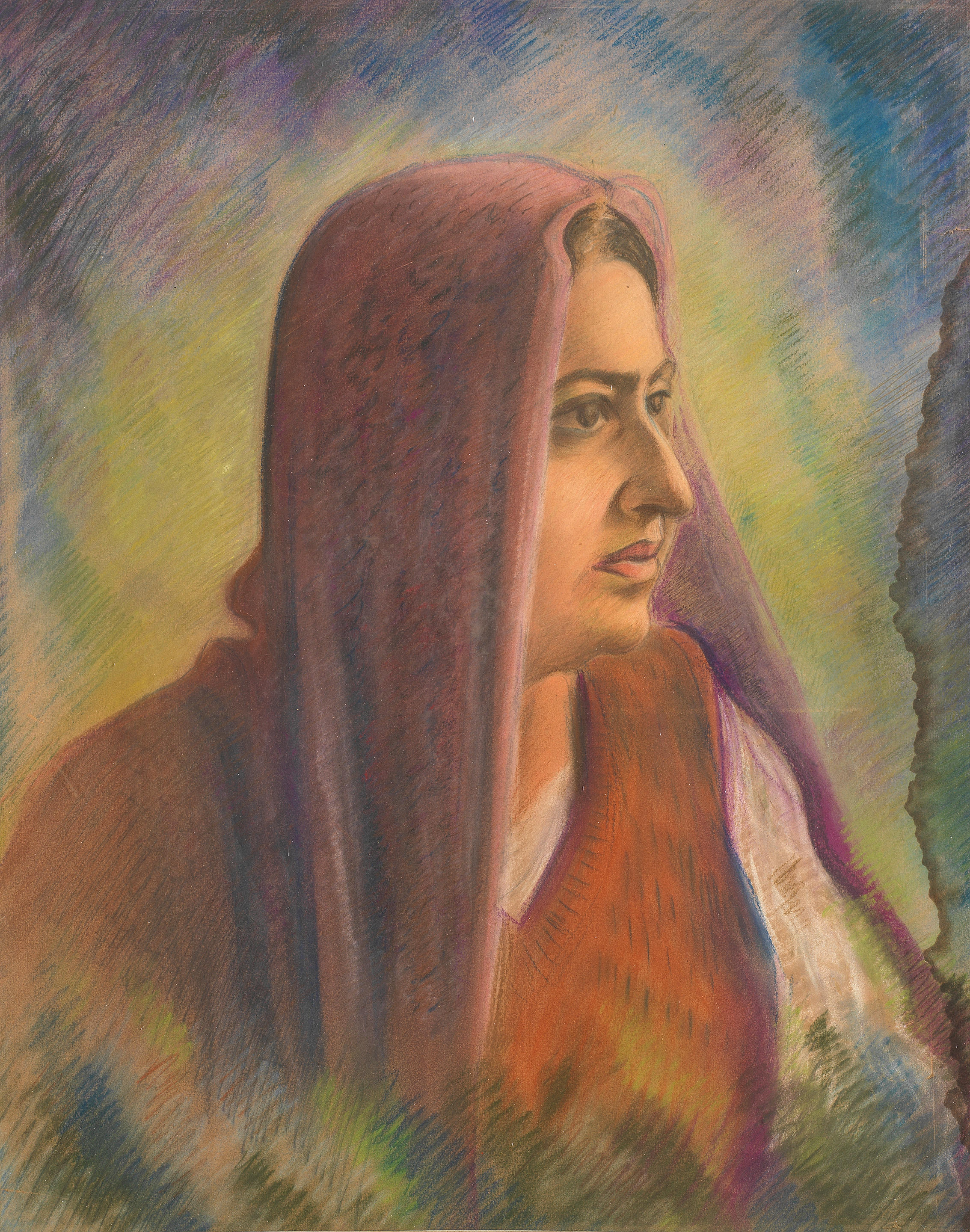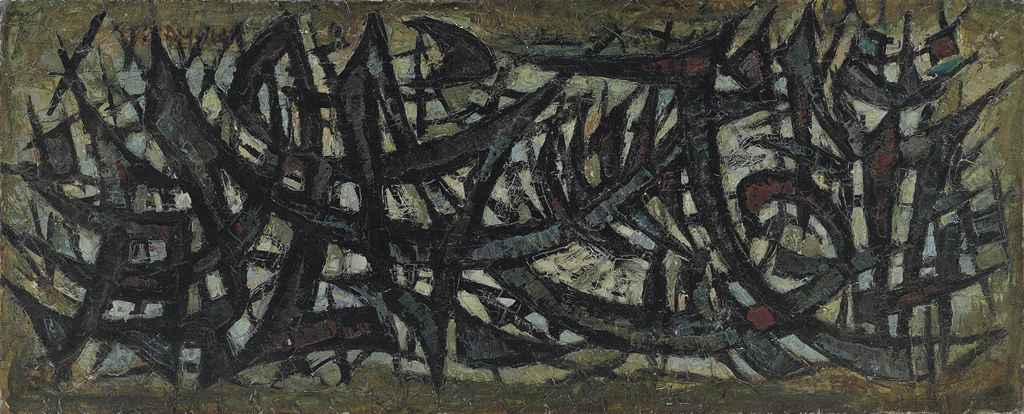Sadequain (Pakistan, 1937-1987) Sunrise Signed and dated '68 upper right Oil on canvas 87 x 135cm (34 1/4 x 53 1/8in). Fußnoten Provenance: Collection of Wahab Jaffar, Karachi, Pakistan; Christie's, South Asian Modern + Contemporary South Asian Art, New York, 16 September 2009, Lot 561; Private Collection, U.K. Born in Amroha, U.P. in the period of the Great Depression, Sadequain went on to study at Agra university. Unable to afford the fees for Calcutta School of art where he longed to study, Sadequain instead worked at the All-India Radio in Delhi. It is generally accepted that Sadequain did not have any formal art training and thus, incredibly, he is considered a self taught artist. After migrating top Pakistan post partition, Sadequain worked for a year with Radio Pakistan before devoting himself to art. When asked what is the most important aspect of your life – Sadequain stated: 'Work – Painting and other creative work is done by me not because I want to! Something inside me compels to work even though I may not want to...You see, I can live without food for three or four days. I cannot live without work for a single day!' In 1958 the internationally renowned artist, Sadequain, went into self imposed seclusion to recuperate from exhaustion. He isolated himself on the arid and unforgiving seacoast of Gadani just outside Karachi. The dense covering of cacti on the parched landscape proved to be of significant influence as he admired the defiance of the resilient plant. In an interview with art critic Thomas Dowling, Sadequain notes the importance of the cactus to his oeuvre: "In the anatomy of these gigantic plants I found the essence of calligraphy. Everything that I have painted since then — a city like Rawalpindi, buildings, a forest, a boat, a table or a chair, a man, a mother and child, or a woman—has been based on calligraphy, which in itself issues from the structure of the cactus." (Abdul Hamid Akhund et al, Sadequain: The Holy Sinner, Mohatta Palace Museum, Karachi, 2003, pg. 30) Not preoccupied with emulating the western modernist tradition both in his work and his own appearance It was not a complete rejection however, as it was noted the profound impact Picasso had had on Sadequain. The calligraphic text, the human figure and the cactus all core stylistic references of Sadequain's work are epitomised in this particular piece. Poetic in his very essence, Sadequain's work and life was intertwined with words. His figures speak like calligraphic text. Naqvi notes Sadequain's admiration of El Graco, whose 'ecstatic figures burned and waved, like flames in agony for the infinite' (Akbar Naqvi, Image and Identity: Fifty years of Painting and Sculpture in Pakistan, Karachi, 1998, p. 365) Sadequains own figures writhe in contorted angst and with their deep black lines he instils on canvas a dynamism reserved for reality and motion picture. In this work the figures stand proud and resilient akin to an army readying for battle, overlooked by a blazing red sun. The red sun is a recurring theme in Sadequain's work from the 1960's. Glowing and almost demonic in its presence, the red sun suggests an ancient divinity. There are parallels to the ancient Egyptian sun God, Ra and the Bindu in Hindu mythology. This is typical of Sadequain, who although often sported the Pakistani national dress of kurta and shalwar, saw spirituality in all its global incarnations, even in the newly formed Islamic state. It is this all encompassing veneration that puts Sadequain in his own category. The commercial agenda that dictates the works of most of his peers is absent in his canvases. He was a self professed 'Fakir' and largely gifted his works to his friends and acquaintances. Rarely do we see such a quintessential masterpiece by Sadequain.
Sadequain (Pakistan, 1937-1987) Sunrise Signed and dated '68 upper right Oil on canvas 87 x 135cm (34 1/4 x 53 1/8in). Fußnoten Provenance: Collection of Wahab Jaffar, Karachi, Pakistan; Christie's, South Asian Modern + Contemporary South Asian Art, New York, 16 September 2009, Lot 561; Private Collection, U.K. Born in Amroha, U.P. in the period of the Great Depression, Sadequain went on to study at Agra university. Unable to afford the fees for Calcutta School of art where he longed to study, Sadequain instead worked at the All-India Radio in Delhi. It is generally accepted that Sadequain did not have any formal art training and thus, incredibly, he is considered a self taught artist. After migrating top Pakistan post partition, Sadequain worked for a year with Radio Pakistan before devoting himself to art. When asked what is the most important aspect of your life – Sadequain stated: 'Work – Painting and other creative work is done by me not because I want to! Something inside me compels to work even though I may not want to...You see, I can live without food for three or four days. I cannot live without work for a single day!' In 1958 the internationally renowned artist, Sadequain, went into self imposed seclusion to recuperate from exhaustion. He isolated himself on the arid and unforgiving seacoast of Gadani just outside Karachi. The dense covering of cacti on the parched landscape proved to be of significant influence as he admired the defiance of the resilient plant. In an interview with art critic Thomas Dowling, Sadequain notes the importance of the cactus to his oeuvre: "In the anatomy of these gigantic plants I found the essence of calligraphy. Everything that I have painted since then — a city like Rawalpindi, buildings, a forest, a boat, a table or a chair, a man, a mother and child, or a woman—has been based on calligraphy, which in itself issues from the structure of the cactus." (Abdul Hamid Akhund et al, Sadequain: The Holy Sinner, Mohatta Palace Museum, Karachi, 2003, pg. 30) Not preoccupied with emulating the western modernist tradition both in his work and his own appearance It was not a complete rejection however, as it was noted the profound impact Picasso had had on Sadequain. The calligraphic text, the human figure and the cactus all core stylistic references of Sadequain's work are epitomised in this particular piece. Poetic in his very essence, Sadequain's work and life was intertwined with words. His figures speak like calligraphic text. Naqvi notes Sadequain's admiration of El Graco, whose 'ecstatic figures burned and waved, like flames in agony for the infinite' (Akbar Naqvi, Image and Identity: Fifty years of Painting and Sculpture in Pakistan, Karachi, 1998, p. 365) Sadequains own figures writhe in contorted angst and with their deep black lines he instils on canvas a dynamism reserved for reality and motion picture. In this work the figures stand proud and resilient akin to an army readying for battle, overlooked by a blazing red sun. The red sun is a recurring theme in Sadequain's work from the 1960's. Glowing and almost demonic in its presence, the red sun suggests an ancient divinity. There are parallels to the ancient Egyptian sun God, Ra and the Bindu in Hindu mythology. This is typical of Sadequain, who although often sported the Pakistani national dress of kurta and shalwar, saw spirituality in all its global incarnations, even in the newly formed Islamic state. It is this all encompassing veneration that puts Sadequain in his own category. The commercial agenda that dictates the works of most of his peers is absent in his canvases. He was a self professed 'Fakir' and largely gifted his works to his friends and acquaintances. Rarely do we see such a quintessential masterpiece by Sadequain.

.jpg)













Testen Sie LotSearch und seine Premium-Features 7 Tage - ohne Kosten!
Lassen Sie sich automatisch über neue Objekte in kommenden Auktionen benachrichtigen.
Suchauftrag anlegen